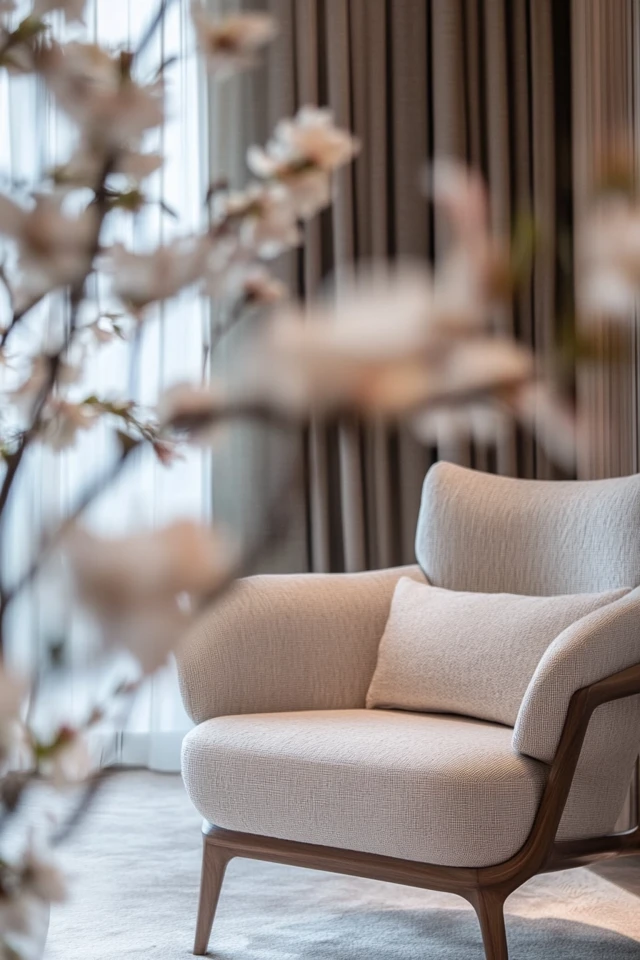Your room should be a sanctuary—a space where you can unwind, recharge, and escape from the chaos of daily life. But creating a serene aesthetic room is more than just decorating with calming colors and cozy furniture. It’s about curating an environment that soothes your senses and brings peace to your mind. I’ve always believed that design impacts mood, and this became especially clear during a stressful time in my life. I transformed my bedroom into a calming retreat, and the difference was profound—I slept better, felt less anxious, and actually looked forward to coming home every day.
Designing a serene room doesn’t have to be complicated or expensive. With intentional choices and a focus on simplicity, you can create a space that feels like a personal retreat. Whether it’s a cozy bedroom, a tranquil reading nook, or a minimalist living room, this guide will help you craft an aesthetic room that prioritizes relaxation.
Let’s explore the key elements of a serene aesthetic room and how to bring them into your space.
1. Choose a Calming Color Palette
Why Color Matters
Colors have a psychological effect on our mood and energy. For a serene aesthetic, a soothing color palette sets the foundation for a tranquil space.
Relaxing Color Palette Ideas
- Neutral Tones: Beige, ivory, and soft greys create an airy, understated backdrop.
- Earthy Colors: Shades like sage green, terracotta, or taupe bring a grounding, natural vibe.
- Pastels: Light blues, blush pinks, and lavender evoke a calming, dream-like atmosphere.
- Monochromatic Schemes: Stick to one color family with variations in shade for a cohesive look.
For a client’s meditation room, we painted the walls in a muted sage green and paired it with natural wood tones. The result was an earthy, calming space that felt perfectly balanced.
2. Incorporate Soft and Natural Lighting
The Role of Lighting in Relaxation
Harsh or overly bright lighting can feel jarring, while soft, diffused lighting creates a sense of calm. Lighting is one of the easiest ways to set the tone in a room.
Tips for Relaxing Lighting
- Layer Lighting: Use a mix of ambient lighting (overhead lights), task lighting (lamps), and accent lighting (LED strips or candles).
- Dimmer Switches: Install dimmers to adjust the brightness based on your mood.
- Warm Bulbs: Opt for warm white bulbs (2700K–3000K) to create a soft, golden glow.
- Natural Light: Maximize natural light with sheer curtains or blinds that diffuse sunlight.
In my own bedroom, I swapped out cool-toned bulbs for warm ones and added a small salt lamp on my bedside table. The softer glow immediately made the room feel more inviting and restful.
3. Add Plush Textures for Comfort
Why Texture is Key
Soft, plush textures evoke comfort and warmth, helping to create a cocoon-like space where you can fully relax.
Textures to Incorporate
- Bedding: Choose high-thread-count sheets, fluffy duvets, and cozy throws in natural fabrics like cotton or linen.
- Rugs: Add a soft area rug or a faux fur accent to warm up hard floors.
- Pillows and Cushions: Mix and match materials like velvet, knit, and faux fur for extra coziness.
- Curtains: Use linen or cotton curtains to soften the look of your windows.
For a serene guest room, I layered a chunky knit blanket over crisp white bedding and added a plush area rug under the bed. It instantly created a cozy, inviting vibe.
4. Declutter and Simplify
How Minimalism Promotes Relaxation
Clutter creates visual and mental stress. A clean, organized space encourages relaxation by removing distractions and fostering a sense of calm.
Steps to Declutter
- Adopt the “Less is More” Approach: Keep only what you truly need or love.
- Stylish Storage: Use woven baskets, decorative boxes, or hidden compartments to store everyday items.
- Clear Surfaces: Keep surfaces like nightstands and dressers free of excess decor or clutter.
I helped a client declutter her bedroom by introducing storage ottomans and under-bed storage. The clean, open space felt instantly more peaceful and relaxing.
5. Introduce Natural Elements
Why Nature Promotes Calm
Incorporating natural elements connects your space to the outdoors, creating a soothing, grounded energy.
Natural Elements to Add
- Plants: Use low-maintenance greenery like pothos, peace lilies, or ferns.
- Wood Accents: Incorporate natural wood furniture, picture frames, or decor pieces.
- Stone and Ceramic: Use decorative bowls, vases, or planters made from earthy materials.
- Water Features: Add a small tabletop fountain for the soothing sound of flowing water.
In a recent project, I placed a trailing ivy plant on a high shelf and added a bamboo tray to the coffee table. These small touches brought a fresh, organic feel to the room.
6. Use Scents to Enhance Relaxation
The Power of Aromatherapy
Scent has a profound effect on mood and relaxation. The right fragrance can instantly make a room feel serene.
Relaxing Scent Ideas
- Candles: Choose scents like lavender, vanilla, or eucalyptus.
- Essential Oil Diffusers: Diffuse calming oils like chamomile, sandalwood, or bergamot.
- Fresh Flowers: Use fragrant blooms like jasmine, lilac, or roses.
- Sachets or Potpourri: Place lavender sachets in drawers or bowls of potpourri on tables.
For a client’s relaxation corner, we added a ceramic diffuser with lavender oil. The calming scent enhanced the tranquil atmosphere of the space.
7. Create Zones for Relaxation
Why Zoning Matters
Dividing your room into functional zones helps you mentally separate activities, creating a dedicated space for relaxation.
Relaxation Zone Ideas
- Reading Nook: Add a comfy chair, a small side table, and a lamp in a corner of your room.
- Meditation Area: Use a soft mat, floor cushions, and a small altar with candles or crystals.
- Cozy Bed Area: Layer your bed with throws, pillows, and bedside lighting to make it the ultimate relaxation spot.
In one project, I created a serene corner with a plush armchair, a woven basket for blankets, and a side table holding a scented candle and a book. It became the client’s favorite spot to unwind.
8. Incorporate Art That Brings Joy
The Role of Visuals in Relaxation
Art and decor should evoke feelings of peace, happiness, or inspiration. Choose pieces that resonate with you personally.
Relaxing Art Ideas
- Nature Scenes: Use artwork featuring mountains, forests, or oceans.
- Abstract Prints: Choose soft, flowing patterns in muted colors.
- Personal Photos: Frame memories of happy times or loved ones.
- DIY Art: Create your own calming art pieces with soft brushstrokes or neutral tones.
For a beach-inspired room, I added a large canvas print of a serene ocean view. The calming imagery became the focal point of the space.
9. Keep Electronics to a Minimum
Why Less Tech Equals More Peace
Electronics like TVs or laptops can disrupt the calming atmosphere of your room. Keeping them out of sight helps maintain a serene vibe.
Tips for Managing Electronics
- Hide Cables: Use cord organizers or cable covers to reduce visual clutter.
- Limit Screens: Keep TVs or computers out of the bedroom if possible.
- Dedicated Charging Station: Use a stylish charging dock to keep devices organized and off surfaces.
For my own bedroom, I moved my work laptop to another room and added a decorative box for charging my phone. It made the space feel instantly more relaxing.
10. Layer Sounds for a Tranquil Atmosphere
Why Sound Matters
Soothing sounds enhance the calming energy of your room and block out distracting noise.
Sound Ideas for Relaxation
- White Noise Machines: Use these to create a consistent, calming background sound.
- Soft Music: Play instrumental or nature-inspired playlists.
- Natural Sounds: Use apps or devices with rain, ocean, or forest sounds.
In one client’s meditation area, we added a small speaker that played soft instrumental music. It created a serene, immersive experience.
Picture Gallery
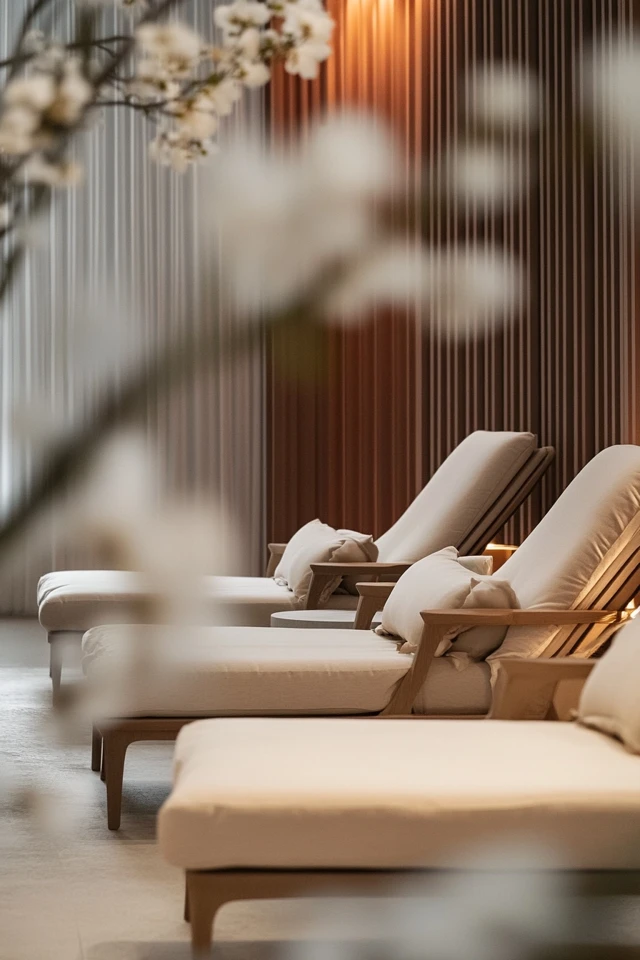
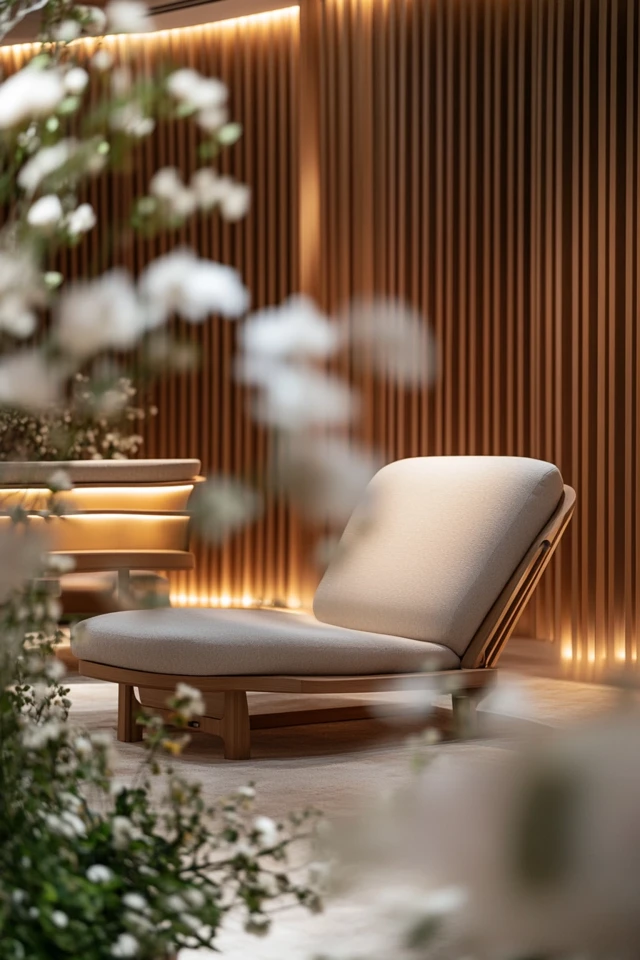
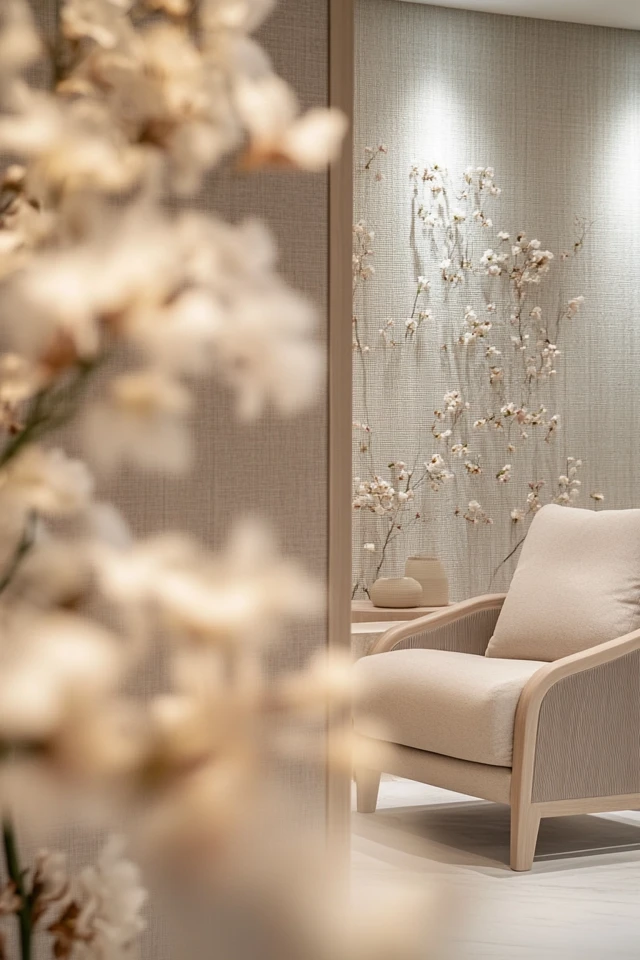
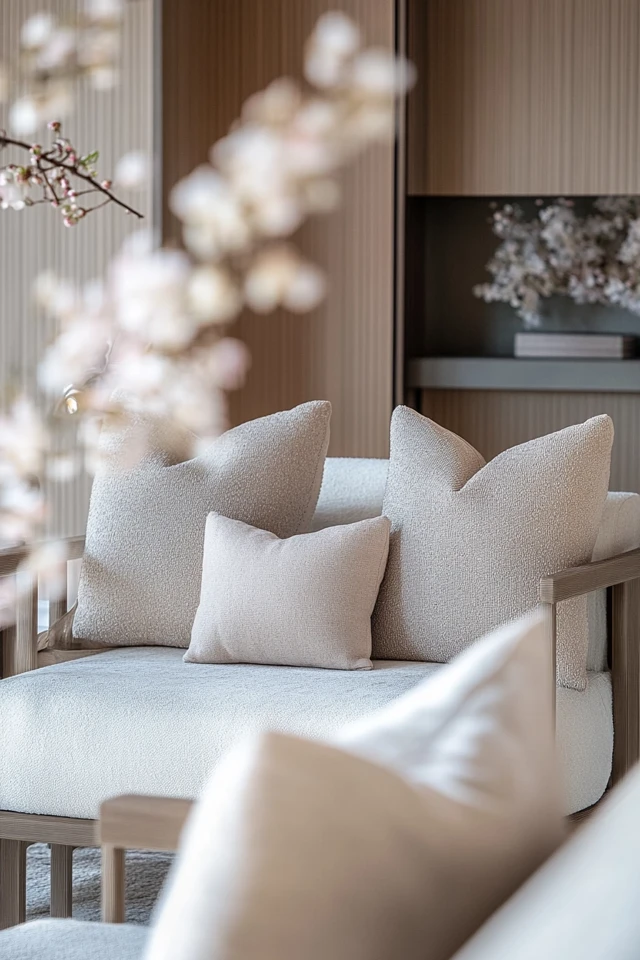
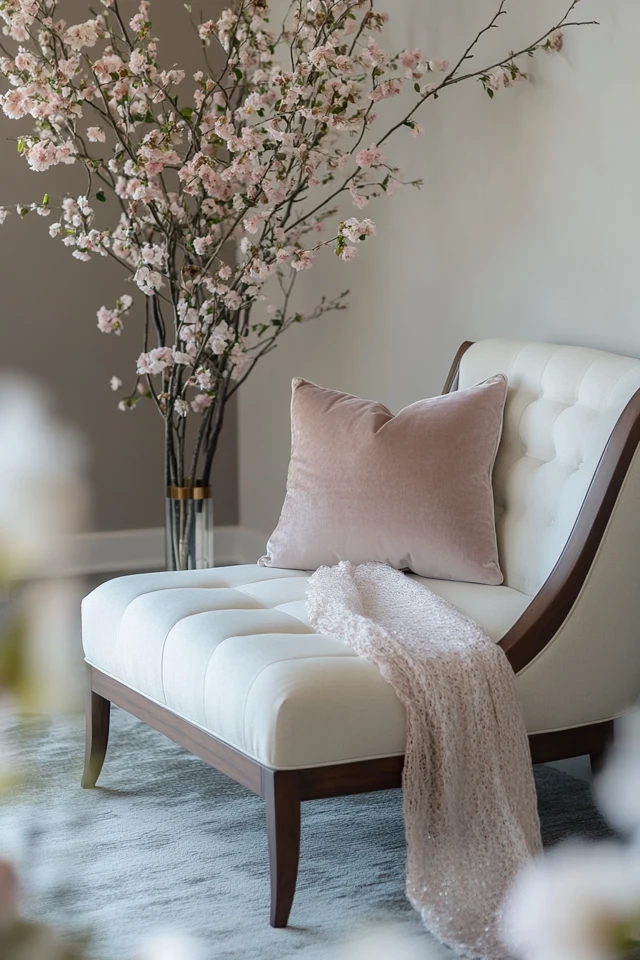
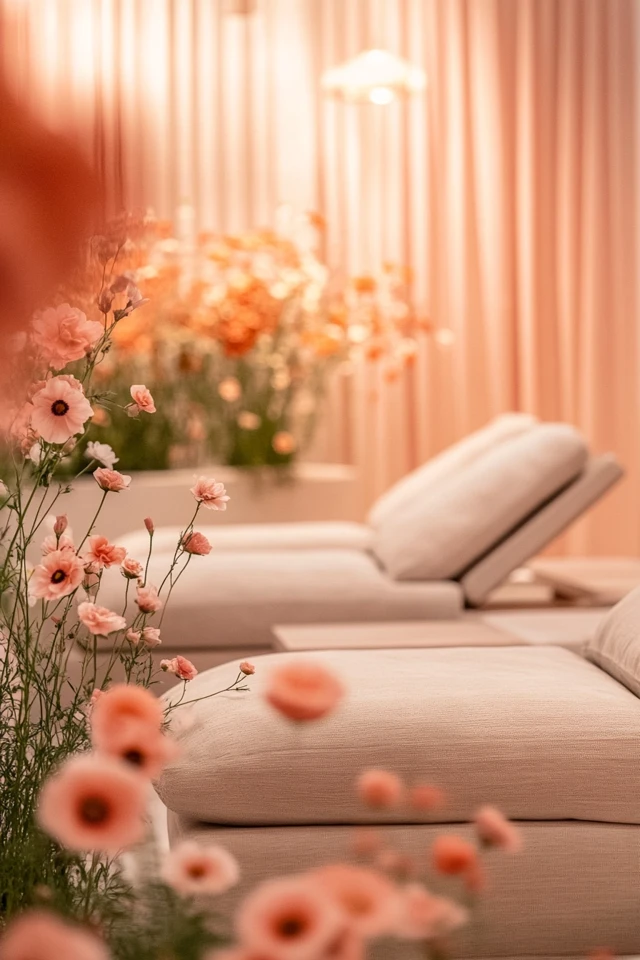
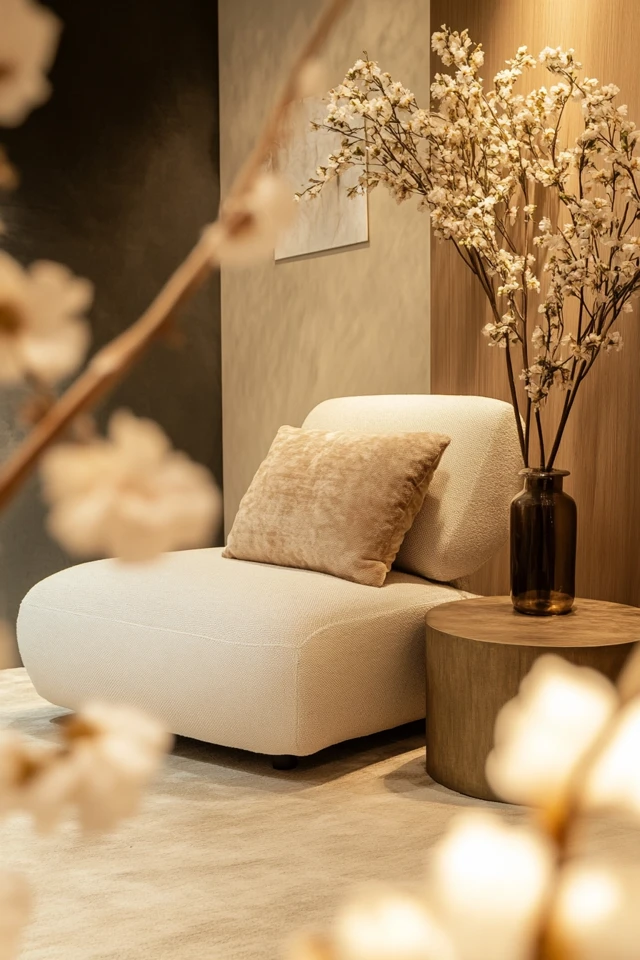
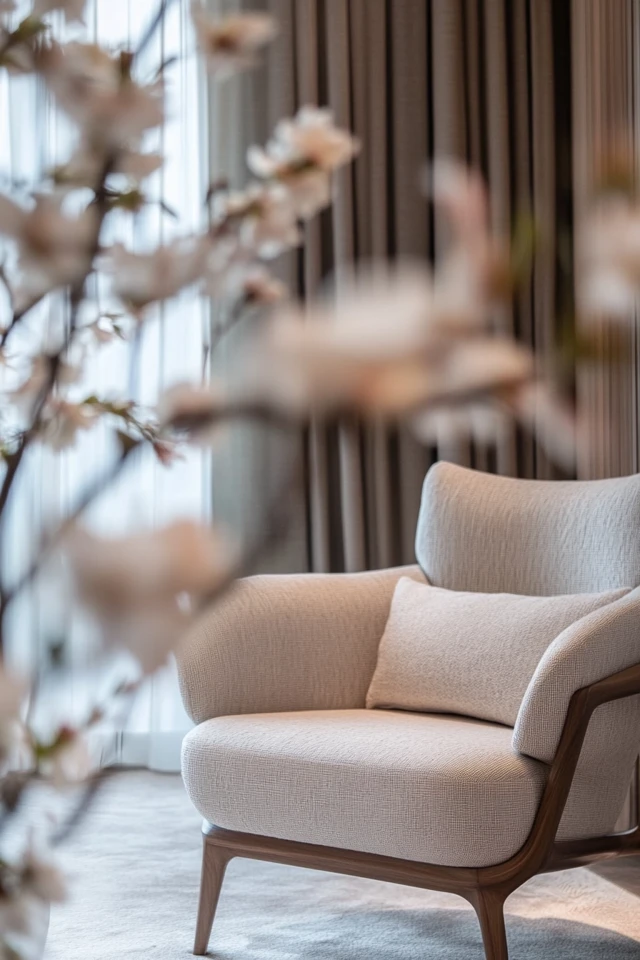
Conclusion
Creating a serene aesthetic room is about more than just decor—it’s about curating an environment that nurtures your mind, body, and soul. From calming colors to natural elements and soothing scents, every choice you make contributes to a space that feels like a true retreat.
I’ve learned through personal experience and client projects that even small changes can have a profound impact. A simple swap of lighting, the addition of a cozy throw, or a decluttered surface can turn an ordinary room into a serene haven.
So take it step by step, and don’t be afraid to experiment with what works best for you. At the end of the day, your room should feel like a breath of fresh air—a place where you can truly relax and recharge.
FAQ
What are the easiest ways to make a room feel more relaxing?
Start by decluttering, using soft lighting, and adding cozy textiles like throw blankets and rugs.
How can I make my room smell calming?
Use essential oils, candles, or fresh flowers with relaxing scents like lavender, vanilla, or eucalyptus.
What colors work best for a serene aesthetic room?
Soft neutrals, earthy tones, and pastels like sage green, blush, or light blue are ideal for creating a calming environment.
How do I keep my serene room organized?
Use stylish storage solutions like baskets or hidden compartments, and adopt a “less is more” approach to decor.
Can I create a serene room on a budget?
Absolutely! Focus on small changes like rearranging furniture, adding plants, or swapping out harsh lighting for warm bulbs.

